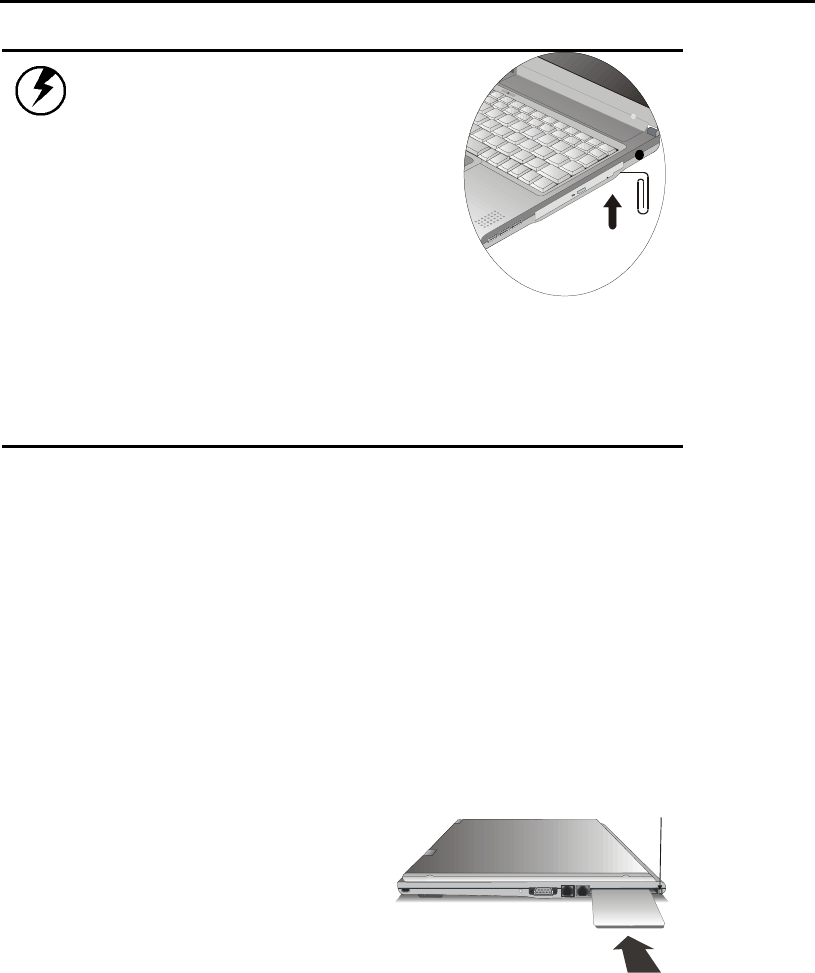
Getting Started — Connecting the Printer
Warning: Do not insert any
foreign objects into the disc
tray. Do not force the tray to
open or close manually. When not
in use, keep the tray closed to
prevent dust or dirt from
entering the drive unit. If you
experience difficulty when
removing an optical media,
stretch a paper clip (or use a
pin or a thin metal rod) and
insert it into the emergency
eject hole located on the front
panel:
The optical drive tray should eject immediately. This
procedure can also be used to remove an optical media
from the optical drive when the notebook is powered
off.
Connecting the Printer
To connect a USB printer to your notebook via the USB port, use one of the available
USB ports on the right side of your notebook.
The PC Card Slot
The PC card slot can be used as an interface between your computer and a variety of
communications devices, such as network adapters, SCSI adapters, fax/modems, or
provide additional data storage capacity. Your computer's PC card slot
supports PCMCIA
Type II and 32-bit CardBus.
Installing a Card
1. The top side of a PC card is usually
identified with a label. Insert the
card into the slot with the label side
up and the edge with pinhole
contacts going in first.
2. Insert the card into the slot. You will
feel some resistance as the card
slides into the back of the slot.
3. PC cards require drivers, or a program that allows the operating
system to use a specific device. Many drivers are included with
Windows, but if not, you will be prompted to install the driver included
with your card.
Push the button to eject the card.
Slide the card into the slot.
